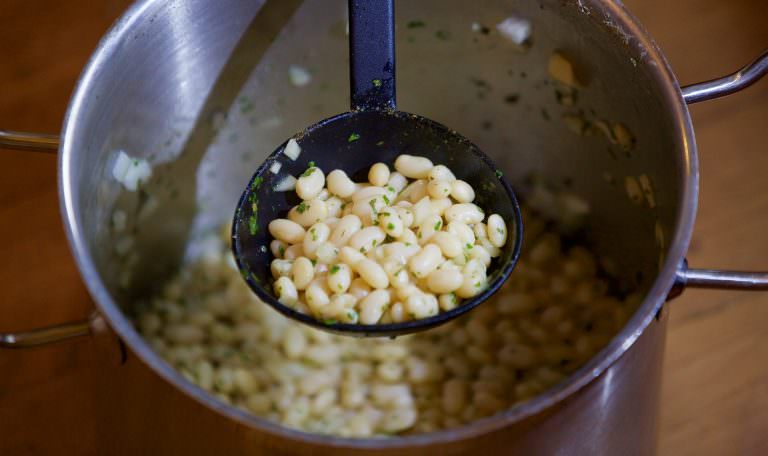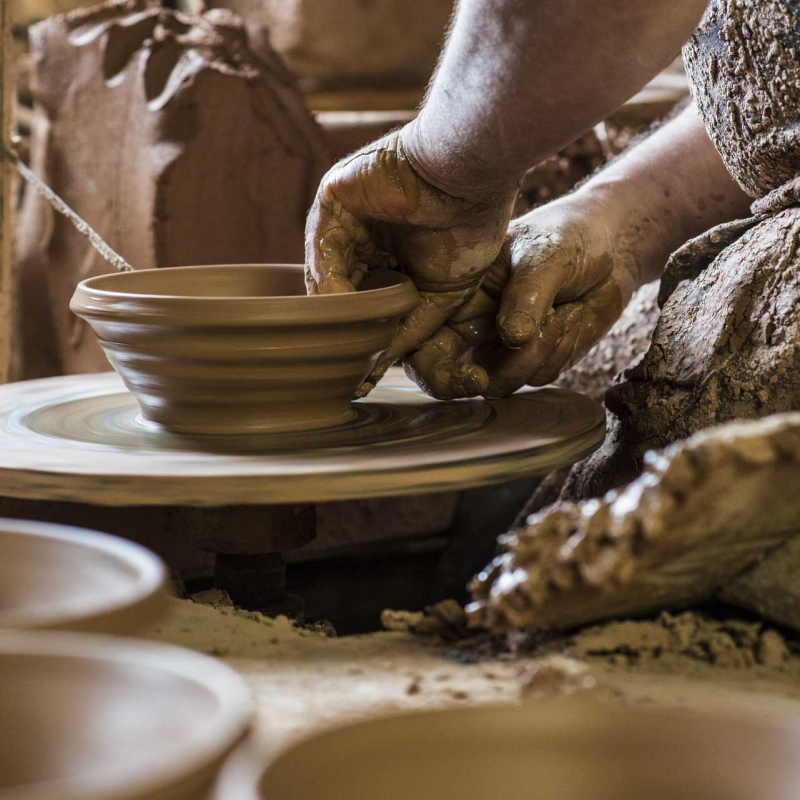Much later, in 1929, Prosper Montagné, a famous chef from Carcassonne, wrote Cassoulet is the God of Occitan cooking in three incarnations: “God the Father is the cassoulet of Castelnaudary, God the Son is that of Carcassonne, and the Holy Spirit is that of Toulouse”…
Castelnaudary Cassoulet
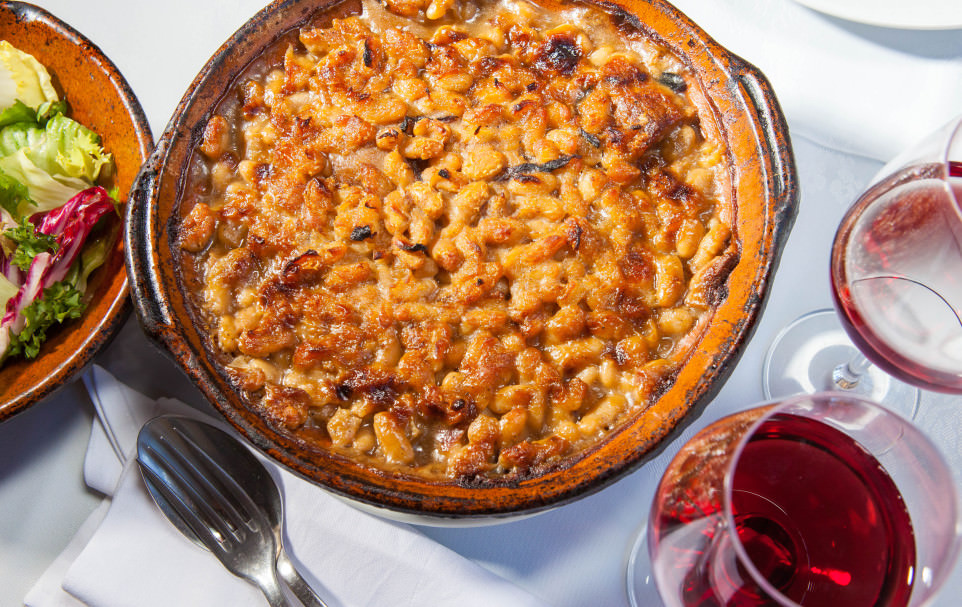
Cassoulet is a dish that was invented in the Middle Ages. It is mentioned as far back as the 14th century. Legend has it that our beloved cassoulet, so prominent in Occitan cuisine, emerged during the 100 Years War when Castelnaudary was under siege by the English.
Under the threat of famine, the inhabitants came together to offer whatever food they had to the town’s troops. Bacon, pork, broad beans, sausages and other meats were all cooked together in an enormous recipient. Revived by this hearty meal, the soldiers of Castelnaudary drove the English occupiers not only out of Lauragais but all the way to the shores… of the English Channel.
The story may well bring a smile to your face, but nobody can deny that cassoulet has stood up to the passage of time and earned itself the status of icon of culinary heritage.
The broad beans have since been replaced by lingot beans and today’s Cassoulet is only served in its exclusive and unusual recipient… the Cassole.
The Occitan Feast
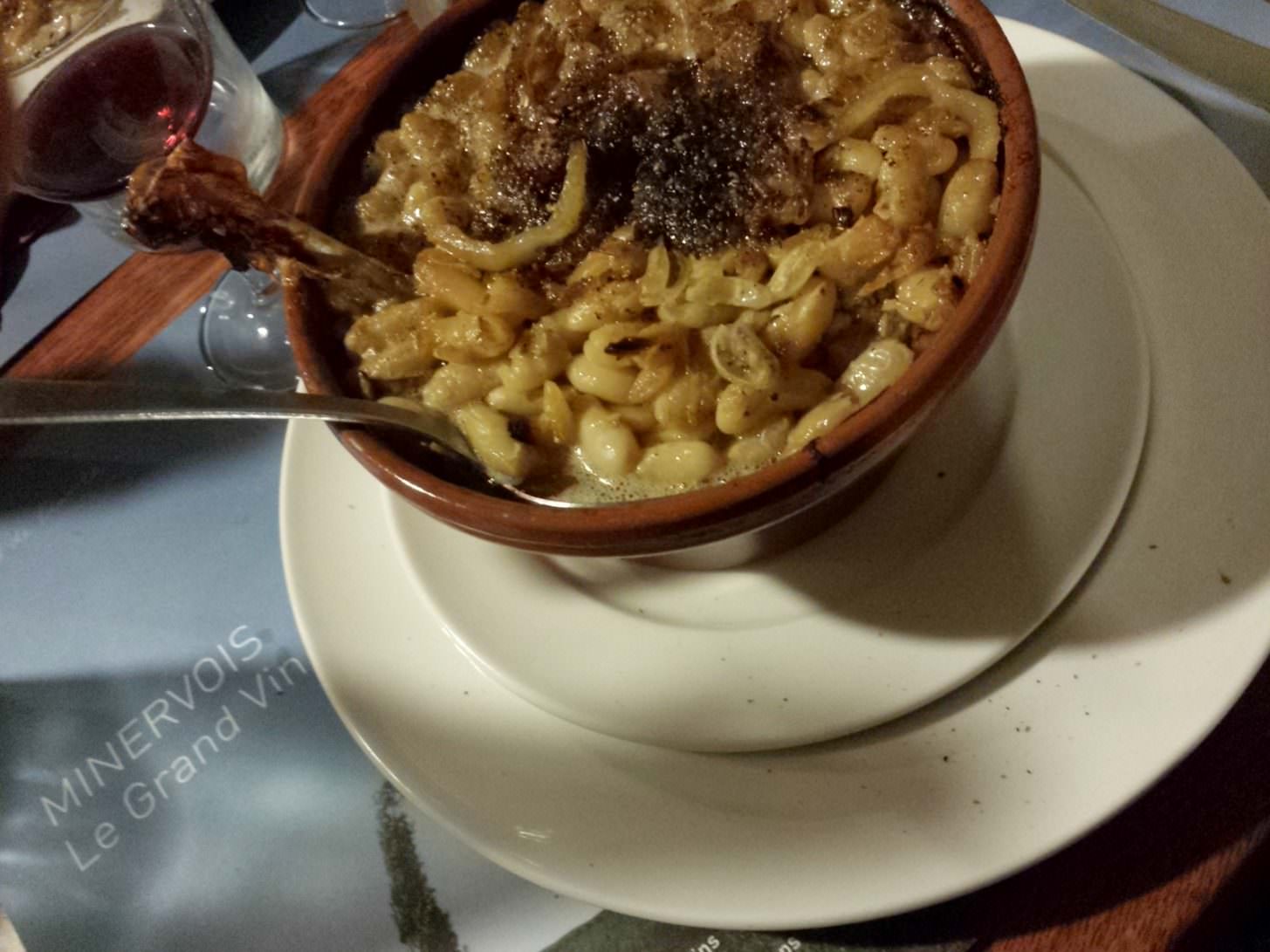
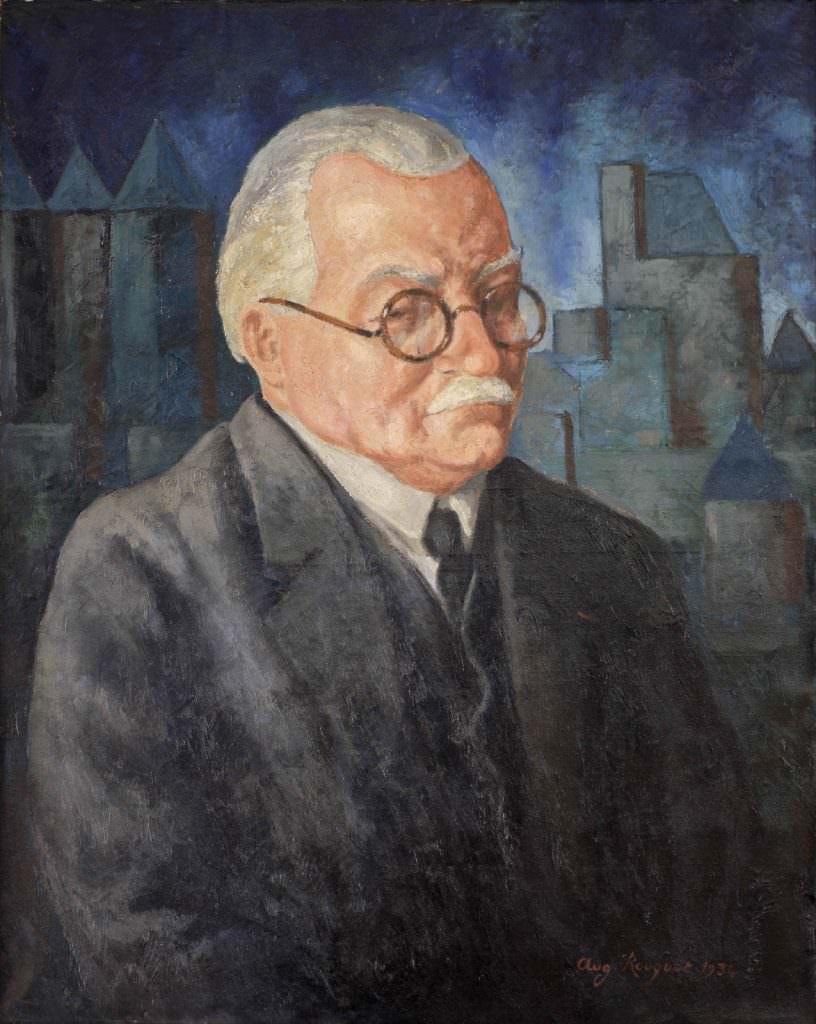
One of the vital success factors of a good cassoulet is its long, slow cooking in a cool oven, during which the crust that forms should be broken several times. Some would say breaking the crust seven times guarantees an excellent cassoulet!
Castelnaudary, Carcassonne or Toulouse?
Castelnaudary Cassoulet does appear to be very close to the basic recipe. It is made from lingot beans, various cuts of pork and fowl (confit, spare rib, belly, rind and knuckle of pork), to which onions, a bouquet garni and seasoning are added.
For a variant on Carcassonne Cassoulet, just add a piece of red-legged partridge.

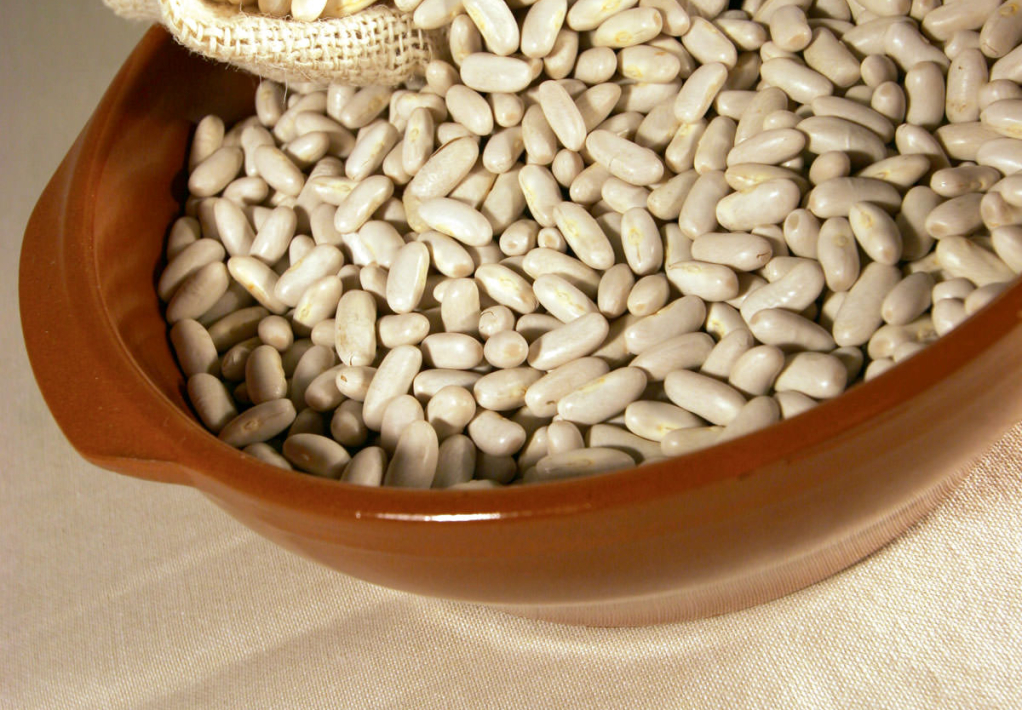
Toulouse Cassoulet is more complex. Add lamb, mutton and, when it’s nearly cooked, pork-rind sausage and duck confit. Before putting it in the oven, place some “Toulouse” sausages on top.
The Castelnaudary Cassoulet Route
From Castelnaudary to Carcassonne, this gourmet itinerary in Cathar Country is a discovery loop of 180 km on which you’ll find every component of this legendary dish. Follow the Cassoulet Route and meet the men and women who contribute to its wonderful taste and quality. Producers, potters, restaurateurs, winegrowers and livestock farmers reserve you a warm welcome.
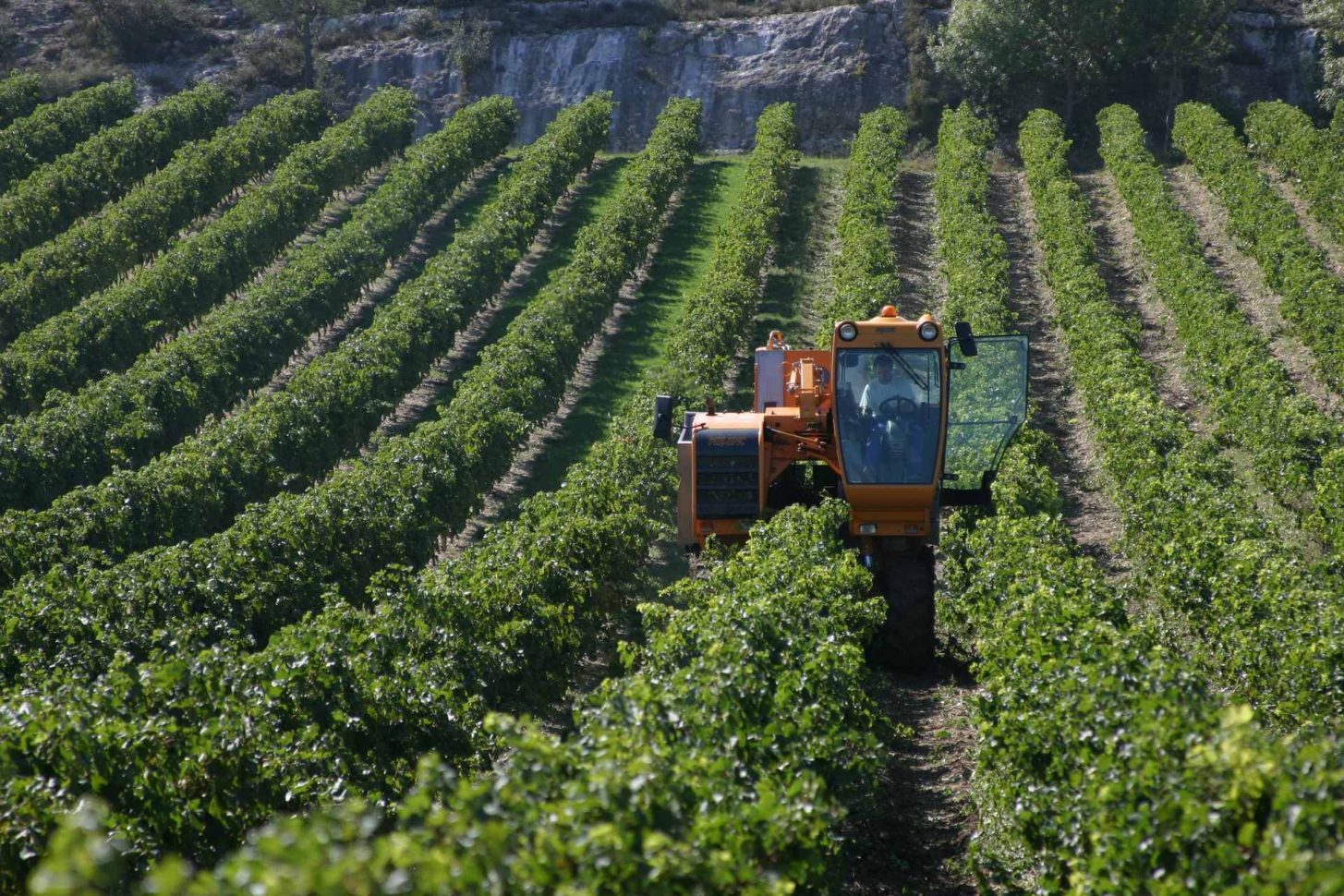
The Not brothers’ cassole
It is famous for its culinary recipients of which the star is the celebrated “cassole“, so essential for cooking a good cassoulet !
Cassoulet, the region’s legendary dish, quite simply took its name from the recipient in which it was cooked. This is the only place in France where cassoles are hand-thrown on potter’s wheels that date from 1830!

You’ll find this pottery in a beautifully bucolic setting by the Canal du Midi as you approach the Mediterranean lock, near Castelnaudary. To be more precise, it’s in the little Lauragais village of Mas-Saintes-Puelles.
The Not family have been potters from father to son for 3 generations. Everything in this traditional pottery is made by hand. Here you can learn the age-old techniques of throwing, firing, kilning and drying earthenware.
The highly-expert brothers master all the pottery-making stages, which are fairly complex, including throwing and enamelling, by soaking or using a ladle. They use a relatively limited pallet of colours (white, blue, green, yellow and natural) in order to respect the raw materials and traditions!


